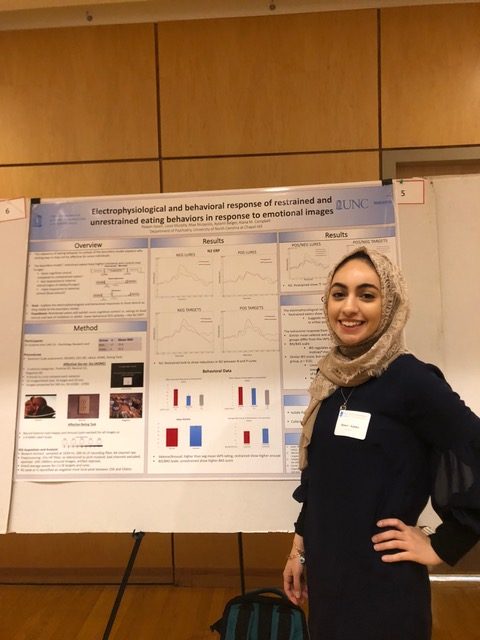
Rawan Ajeen presented a NIRL research poster titled “Electrophysiological and Behavioral Response of Restrained and Unrestrained Eating Behaviors in Response to Emotional Images” at the 2018 UNC Celebration of Undergraduate Research.
Abstract: The boundary model (Herman & Polivy, 1984) characterize restraint in eating as an increased tolerance and control over hunger as well as more cognitive control, related to decreased responses to food stimuli.. This experiment sought to explore behavioral and electrophysiological responses to food stimuli as they relate to the boundary model. Participants (n = 23 ) had their brainwaves recorded while viewing 35 positive, negative, neutral and food images selected from the International Affective Picture System (IAPS). Participants then rated the valence and arousal, on a 1-9 likert scale for the images. Preliminary analysis of the behavioral data showed mean valence and arousal showed that the restrained (n=17) eaters reported higher valence (6.95) than the unrestrained (n=6) eater’s reported mean valence (6.56) and the IAPS mean valence (6.61). Both groups in this experiment reported a higher mean arousal (6.15 Restrained, 5.56 Unrestrained) towards the food IAPS images, than the IAPS mean arousal (4.86). ERP data was collected and is currently being analyzed to include in the poster session. These data suggest that restrained eaters, despite having a higher tolerance to hunger and satiety, as a result are more sensitive to external food stimuli, which confirms Herman and Polivy’s assumption under the boundary model.
